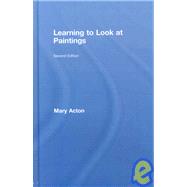
| List of figures | p. xiii |
| List of plates | p. xv |
| Preface | p. xxv |
| Introduction to the second edition | p. xxvii |
| Introduction | p. xxxiii |
| Composition | p. 1 |
| Introduction | p. 1 |
| Horizontals and verticals | p. 2 |
| Harmony and balance | p. 5 |
| Rhythm and the spaces between objects | p. 12 |
| Curves and diagonals | p. 14 |
| Colour | p. 18 |
| Asymmetry | p. 20 |
| Apparently random composition | p. 23 |
| Collage | p. 24 |
| Composition and installation | p. 26 |
| Conclusion | p. 28 |
| Space | p. 29 |
| Introduction | p. 29 |
| Linear perspective | p. 31 |
| Geometrical space | p. 33 |
| Imaginative space and illusionism | p. 36 |
| Aerial perspective | p. 39 |
| Space to walk about in: landscape | p. 41 |
| Spatial distortion: ignoring the middle distance | p. 43 |
| Multiple-viewpoint perspective | p. 45 |
| Space in front of the picture | p. 47 |
| Spatial disorientation | p. 49 |
| Historical and memorial space | p. 52 |
| Conclusion | p. 55 |
| Form | p. 56 |
| Introduction | p. 57 |
| Sculptural form in the human figure | p. 60 |
| Form achieved by chiaroscuro and sfumato | p. 63 |
| Form made tangible | p. 66 |
| The disintegration of form | p. 68 |
| The rebuilding of form | p. 70 |
| Form created with colour | p. 74 |
| Form and scale | p. 76 |
| The closing of the gap between painting and sculpture in the twentieth century | p. 78 |
| Conclusion | p. 87 |
| Tone | p. 88 |
| Introduction | p. 88 |
| Tone used to create drama | p. 91 |
| Tone and the expression of emotion | p. 94 |
| Tone and the realisation of form and space | p. 98 |
| Tone used to create atmosphere | p. 104 |
| Tone and the reconstruction of form | p. 107 |
| The use of chalk and blackboard to manipulate tone | p. 109 |
| Conclusion | p. 113 |
| Colour | p. 118 |
| Introduction | p. 118 |
| The use of colour to express emotion | p. 124 |
| Colour and the power of suggestion | p. 125 |
| The power of colour to disturb the emotions | p. 127 |
| The power of colour to express emotion without a figurative subject | p. 128 |
| Colour and scale | p. 130 |
| Colour and the expression of texture | p. 132 |
| The use of coloured light for expression | p. 133 |
| Conclusion | p. 134 |
| Subject-matter | p. 135 |
| Introduction | p. 135 |
| Religious subjects | p. 136 |
| Mythological subjects | p. 138 |
| Historical subjects | p. 142 |
| Scenes of everyday life with a moral | p. 145 |
| Literary subject-matter | p. 148 |
| The significance of the intended setting for a picture and the role of restoration | p. 151 |
| Subject-matter and image making: clarity and ambiguity in communicating a message | p. 153 |
| Subject-matter and the idea of abstraction | p. 164 |
| Subject-matter and interpretation | p. 166 |
| Poetical subjects | p. 169 |
| Subject-matter and the idea of painting as poetry | p. 171 |
| Conclusion | p. 172 |
| Drawing and its purposes | p. 175 |
| Introduction | p. 175 |
| Drawing used to try out ideas | p. 177 |
| Drawing and sculptural expression | p. 182 |
| Landscape drawings | p. 185 |
| Topographical drawings and watercolours | p. 187 |
| Line drawing | p. 189 |
| Individual drawing techniques in the twentieth century | p. 195 |
| Conclusion | p. 200 |
| Looking at prints | p. 202 |
| Introduction | p. 202 |
| The exploitation of detail: line engraving, woodcut and wood engraving | p. 204 |
| The creation of mystery and ambivalence by means of tone | p. 209 |
| The development of a print from its original drawing: etching and aquatint | p. 213 |
| Lithography | p. 218 |
| The coloured lithography | p. 220 |
| Silk screen printing and the use of modern printing techniques | p. 223 |
| New ways of making prints and the impact of digital technology | p. 225 |
| Conclusion | p. 226 |
| Conclusion: the use of comparison as an aid to looking | p. 228 |
| Some questions to ask yourself when standing in front of a painting | p. 233 |
| Glossary of some art terms | p. 234 |
| References and further reading | p. 247 |
| Index | p. 254 |
| Table of Contents provided by Ingram. All Rights Reserved. |
The New copy of this book will include any supplemental materials advertised. Please check the title of the book to determine if it should include any access cards, study guides, lab manuals, CDs, etc.
The Used, Rental and eBook copies of this book are not guaranteed to include any supplemental materials. Typically, only the book itself is included. This is true even if the title states it includes any access cards, study guides, lab manuals, CDs, etc.